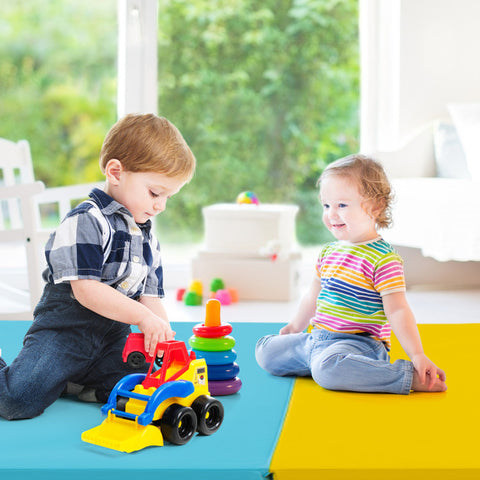News
The Importance of Proper Edge Design in Gymnastics Mats for Injury Prevention
While most athletes and coaches focus on the thickness or material of a gymnastics mat, one often-overlooked aspect is the design of the mat’s edges. The edges of a mat can significantly influence safety, performance, and equipment compatibility, especially in high-impact activities. Whether you’re setting up a home gym or outfitting a professional training facility, understanding edge design can help reduce injury risks and improve overall usability.

Types of Edge Designs in Gymnastics Mats
Not all mats are made the same when it comes to their borders. Some of the most common edge styles include:
-
Flat Seam Edges – Common in panel and folding mats. These allow multiple mats to sit flush together, minimizing gaps.
-
Tapered Edges – Often used in landing mats or crash pads to reduce tripping hazards.
-
Velcro Connector Edges – Designed to fasten multiple mats together securely for large surface areas.
-
Raised or Rolled Edges – Sometimes found in specialized mats to offer extra cushioning around boundaries or corners.
Each type of edge serves a different purpose depending on usage and setting.
Why Edge Design Matters for Safety
Improper edge design or poorly maintained seams can lead to various issues:
-
Tripping Hazards – Raised or curled edges can cause athletes to stumble during transitions or landings.
-
Mat Separation – Without proper edge connections, mats can drift apart during use, creating dangerous gaps.
-
Foot and Ankle Injuries – Unstable or overly soft edges can lead to sprains or rolled ankles during landings.
-
Inconsistent Landing Surfaces – Uneven edges can disrupt momentum or cause poor landings, particularly in tumbling passes.
Edge Design in Competition vs. Training Mats
Competition mats are designed with strict uniformity, including edge flatness and interlocking ability. Training mats may allow for more flexibility but require frequent inspection to ensure edge integrity, especially when used on uneven flooring or moved frequently.
Tips for Choosing Safe Edge Designs
-
For Tumbling or Vaulting: Choose mats with firm, flat edges that connect with Velcro or locking flaps.
-
For Home Use or Kids: Tapered edges reduce the chance of tripping and make transitions safer.
-
For Crash and Landing Pads: Rolled or cushioned edges help absorb impact and soften landings.
-
For High-traffic Gyms: Modular mats with hook-and-loop connectors allow seamless surfaces and fewer gaps.
Maintenance Tips for Mat Edges
-
Check Weekly for Peeling or Fraying – Damaged seams can quickly worsen with use.
-
Keep the Surface Clean and Dry – Moisture can weaken stitching or adhesives along the edges.
-
Store Mats Flat – Folding or rolling them improperly can stress the edges and cause warping.
-
Replace Edge Velcro When Worn – This ensures mats stay securely fastened during training.
Signs It's Time to Repair or Replace Mat Edges
-
Visible fraying or torn stitching
-
Curled corners that won’t lay flat
-
Gaps between mats during use
-
Loose or ineffective Velcro straps
Conclusion: Small Details, Big Impact
Edge design might seem like a minor feature, but it plays a crucial role in gymnast safety and mat functionality. By selecting mats with the right edge design and keeping them well-maintained, you can prevent unnecessary injuries and ensure a more stable, secure training space. Whether for recreational or competitive use, smart edge planning is a key part of mat selection.

